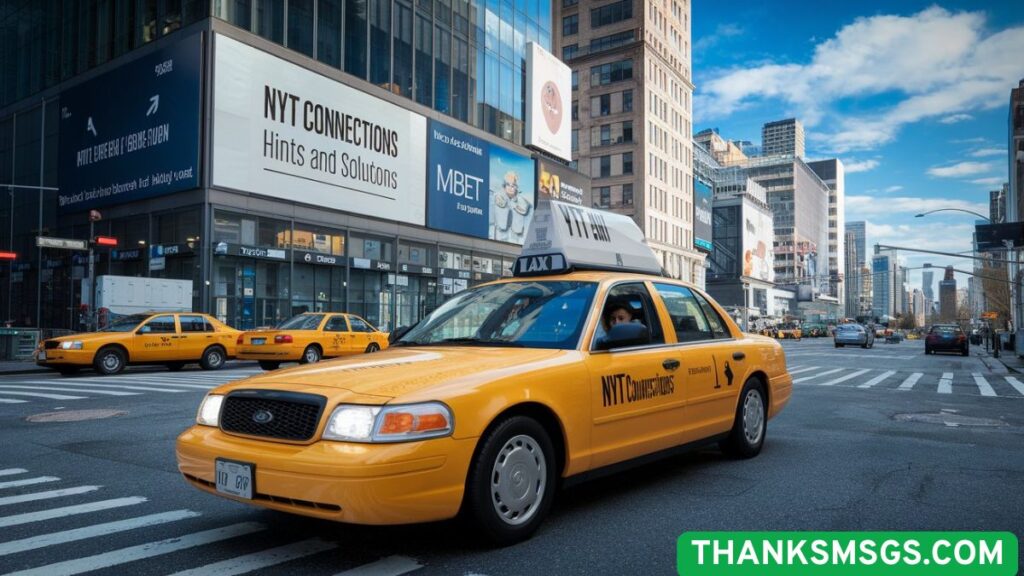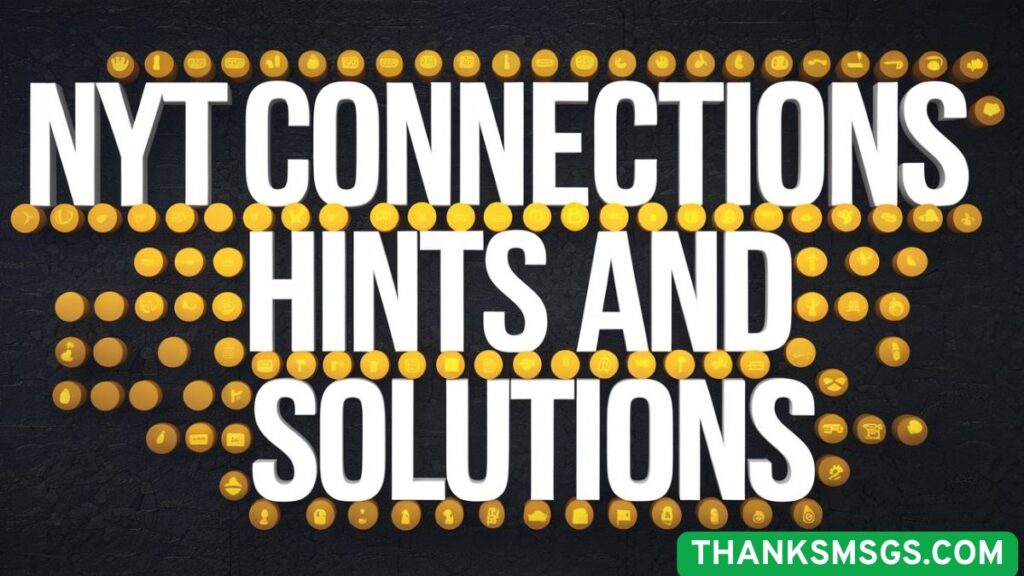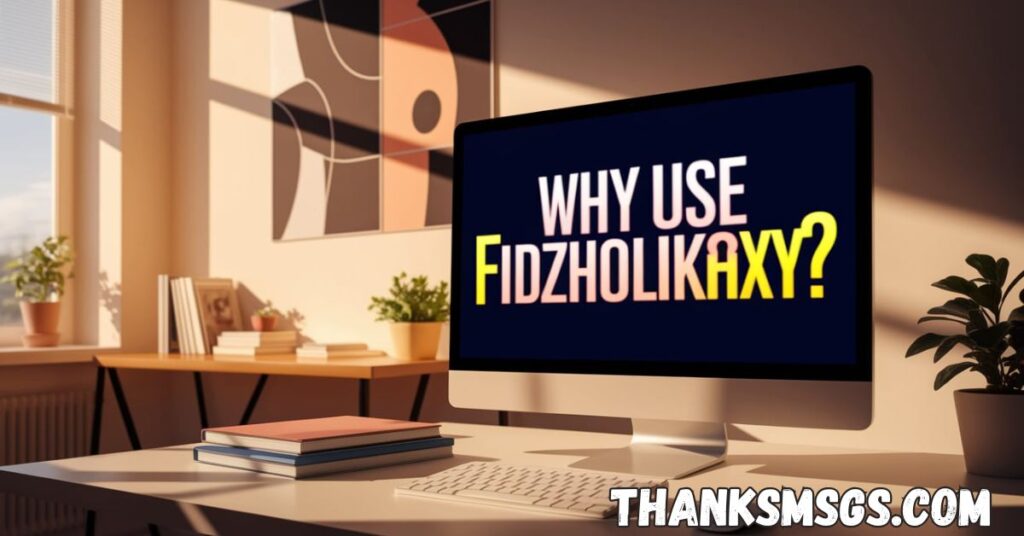NYT Connections Hints are helpful clues for the daily word puzzle called NYT Connections. This game asks players to find groups of words that share a common theme. The hints guide players by pointing out patterns and word links without giving the full answer.
If you love word games but sometimes get stuck, NYT Connections Hints can make the game more fun. They help you see the puzzle in a new way and solve it faster. These hints keep your brain sharp while making the challenge easier to enjoy.
Using NYT Connections Hints gives you extra help when the puzzle gets tricky. They explain the themes behind word groups like colors, actions, or objects. With these hints, you can improve your puzzle-solving skills and enjoy the daily brain challenge more.
Hints for the themes in today’s Connections puzzle
Today’s 16-word Connections puzzle offers a mix of words that form four distinct groups, each connected by a shared theme. To help you get started without giving everything away, here are some spoiler-free hints. One group involves words related to breadmaking verbs, another features words connected to achievement awards, while others focus on things you can blow and common terms that fit a particular abstract category.
If you look carefully, you’ll notice how the words can be logically categorized once you decode the subtle clues. The trick is to pay attention to the nature of the words—verbs, objects, or concepts—and see which ones fit naturally together. This approach is a great example of word grouping logic, a core skill needed in word association puzzles and language puzzles.
BEWARE: Spoilers follow for today’s Connections puzzle!
If you want to enjoy the daily word puzzle on your own, this is your warning. From this point forward, the article contains full puzzle answers and the entire puzzle solution breakdown. Reading ahead might spoil the fun of figuring out the puzzle yourself. However, for those who want to check their work or need help cracking a tough group, the solutions are here for you.
A heads up about the tricky parts

Today’s NYT Connections puzzle includes some words that might seem to belong in more than one group. This kind of challenge is typical in the New York Times puzzle series, which prides itself on pushing players to use creative thinking exercises and cognitive engagement tools. For instance, some words related to blowing can also be linked to abstract concepts of movement or sound, causing confusion.
One way to avoid mistakes is to carefully analyze each word’s most common association rather than less obvious meanings. For example, the word “toast” could mean a celebration (fitting the achievement awards theme) or the process of heating bread (linking to breadmaking verbs). Such overlaps require you to use the puzzle elimination process, a strategy where you temporarily place words in different groups until the final arrangement makes logical sense.
What are the categories in today’s Connections?
For Wednesday, June 4, 2025, the four game categories are:
| Category Color | Theme Description | Example Words |
| Yellow | Breadmaking verbs | knead, bake, proof |
| Green | Achievement awards | medal, trophy, honor |
| Blue | Things you can blow | whistle, bubble, horn |
| Purple | Abstract word groupings | flow, drift, surge |
These categories reflect a well-balanced mix of action words, nouns related to objects, and more abstract terms. Recognizing such thematic word grouping helps players sharpen their pattern recognition in puzzles and makes solving easier over time.
Mastering NYT Connections: How Mashable’s Hint Format Boosts Your Puzzle-Solving Skills
Mashable’s NYT Connections hints help players solve puzzles by providing clear yet subtle clues without giving away all the answers. Their hints focus on breaking down the puzzle’s yellow green blue purple categories, making it easier to understand the word grouping game and improve puzzle-solving strategies.
This balanced approach helps both beginners and experts build stronger word association skills and avoid common mistakes. Using Mashable’s hints regularly sharpens your thinking, making you better at tackling daily challenges in NYT Games and other word association puzzles.
DOUBLE BEWARE: THE SOLUTION IS BELOW
This is your last chance to skip ahead if you don’t want to see the answers immediately. Remember, the true joy of the word categorization game comes from the challenge and discovery. But for those who want to compare or learn the correct groups, the solutions come next.
What are the yellow words in today’s Connections?
The yellow group includes breadmaking verbs such as “knead,” “proof,” “bake,” and “rise.” These words are closely linked by their role in making bread. Understanding this helps because all these actions happen during the breadmaking process.
The Connections game themes often focus on verbs that describe stages in a process, and this group is a perfect example. Recognizing action-related categories can speed up your puzzle-solving.
What are the green words in today’s Connections?
The green words relate to achievement awards, including “medal,” “trophy,” “honor,” and “badge.” These words are often seen in competitions or formal recognition events. Their common thread is celebrating success and accomplishment.
Knowing such groups enhances your ability to spot hidden word relationships quickly, a skill valuable not only in Connections but in other word association puzzles as well.
What are the blue words in today’s Connections?
Blue words cover things you can blow such as “whistle,” “bubble,” “horn,” and “gust.” This category is fun because it involves physical actions or objects related to air movement. The challenge here lies in distinguishing between literal and figurative blowing.
This group tests your logical reasoning and ability to think about words in multiple contexts—a key to mastering the puzzle grouping logic that makes the Connections game so addictive.
What are the purple words in today’s Connections?
The purple category is made up of abstract word groupings like “flow,” “drift,” “surge,” and “ebb.” These words represent motion and change, but in a less concrete way than the others. This category is often the trickiest because the connections are conceptual rather than physical.
To solve this, use creative thinking exercises and imagine these words as part of natural or emotional processes. This challenges your cognitive engagement and pushes your mind to spot subtler connections.
How I solved today’s Connections
My approach to solving the June 4, 2025 NYT Connections puzzle started with identifying the most obvious group—the breadmaking verbs. Once I grouped words like “knead” and “bake,” I eliminated them from the pool and looked for the achievement awards words next. This step was easier because the awards have very distinct meanings.
Next, I focused on the words related to blowing. This required more thought because some words, like “gust,” could have different meanings. I used the process of elimination and logical grouping to finalize the blue category. Lastly, the purple abstract words were confirmed by recognizing their shared meaning related to movement and change.
This step-by-step strategy of breaking down groups, confirming, and then revisiting uncertain words is a great puzzle-solving strategy and works well for all daily puzzles in the word association genre.
How to play Connections
Connections is a unique word grouping game available on the NYT Games platform and the NYT Crossword app. The goal is to find four groups of four words that share a common connection. Players select words in groups of four, and the game confirms if they are correct. The challenge is to find all four groups as quickly as possible, using clues and word associations.
Each day, the puzzle presents 16 words, and players use their vocabulary and logical reasoning to find the hidden word relationships. The game’s color-coded system (yellow, green, blue, purple) helps indicate which groups you have solved, providing a satisfying mental workout. This game is ideal for those who enjoy language puzzles and want a daily brain challenge that improves pattern recognition.
Read Also: fhogis930.5z: Transforming Innovation in the Digital Age
How to win Connections

Winning in Connections is about more than luck; it requires a blend of puzzle-solving tips, strong vocabulary, and smart puzzle grouping logic. The first key is to look for the easiest and most obvious group to reduce the word pool quickly. From there, use the process of elimination to identify the next groups.
Be mindful of words that might fit in multiple groups and think about their most common or strongest association. Avoid rushing; taking your time to reconsider difficult words often prevents common puzzle mistakes. Another tip is to learn from previous puzzles and familiarize yourself with common themes like breadmaking verbs, achievement awards, or things you can blow.
Engaging with the puzzle-solving community and reading trusted guides like Mashable Connections hints or Mashable daily hints can also provide new insights and help you refine your puzzle strategy. Over time, you’ll develop an intuition for recognizing abstract word groupings and tricky connections, boosting both your enjoyment and success in the game.
Mashable’s Hint Format
For many NYT Connections fans in the USA, Mashable has become a trusted source for puzzle hints, solutions, and expert guidance. Their Connections Hint Mashable format is known for helping players tackle tricky daily challenges in the word association puzzles genre.
This article will explain Mashable’s hint format, how they provide NYT Connections hints, community involvement, and compare their service with other hint providers. We’ll also explore advanced techniques for puzzle solving and where to find alternative hint sources.
Structure of Hints
Mashable’s hints for the NYT Connections puzzle are carefully structured to guide players without spoiling the entire puzzle right away. Their typical hint structure begins with spoiler-free clues, offering subtle guidance on identifying groups without giving away exact answers. Then, as the article progresses, the hints get more detailed, eventually revealing puzzle answers and a puzzle solution breakdown for players who want full help.
This layered approach helps both beginners who want to solve on their own with a nudge, and advanced players who need full walkthroughs. The hints focus on word grouping logic, pattern recognition in puzzles, and sometimes highlight the tricky parts of the puzzle, helping users avoid common mistakes.
Community Resources
Mashable also encourages participation in the puzzle-solving community, where players share their thoughts, tips, and solutions. These communities can be found on social media, forums, and comment sections, creating a space for collaborative problem-solving. This is especially helpful for people stuck on the more abstract or difficult groups, where community brainstorming can lead to fresh insights.
The sense of community adds value by allowing players to discuss puzzle-solving strategies, share vocabulary-building tips, and enjoy the social side of a daily brain challenge. Mashable often links to or references these community resources in their hints, reinforcing the idea that puzzle-solving is more fun and effective when shared.
Advanced Techniques for Puzzle Solving
Beyond basic tips, Mashable also shares advanced puzzle-solving strategies. One important technique is to look for words that strongly fit one category and separate them from the rest early. This reduces the pool and makes it easier to find remaining groups.
Another method involves looking for subtle thematic word grouping patterns, such as verbs related to a process (like breadmaking), or items sharing cultural or functional roles (like achievement awards). Mashable encourages players to practice pattern recognition in puzzles and use elimination to test uncertain words.
They also highlight how players can benefit from creative thinking exercises, such as imagining the words in different contexts to uncover abstract connections. These techniques turn Connections from a simple vocabulary game into a robust cognitive challenge.
Alternative Sources for NYT Connections Hints
While Mashable is popular, there are other trusted sources where players can find NYT Connections hints and solutions. Websites like The New York Times official puzzle page, puzzle forums such as Reddit’s r/nytconnections, and puzzle blogs provide daily guides and community insights.
Some players also use social media platforms, where puzzle enthusiasts share daily puzzle guide posts, quick tips, or livestream their solving process. Apps like the NYT Crossword app sometimes offer hints or partial solutions, and third-party sites provide analytics tools that track common word groups and patterns.
Using multiple sources allows players to compare puzzle-solving strategies and find the method that best suits their style.
Comparison with Other Hint Providers

Compared to other hint providers, Mashable stands out for its structured and balanced approach. Many other sources either give away the full solution immediately or offer only vague hints, which can frustrate players. Mashable’s layered hint format supports all levels of solvers, providing a smoother learning curve.
Furthermore, Mashable’s integration of community puzzle solving elements and frequent updates helps players stay engaged and informed. Their detailed explanations often include vocabulary expansions and cultural references, enriching the puzzle-solving experience beyond just finding answers.
How Mashable Provides NYT Connections Hints
Mashable’s approach to providing NYT Connections hints involves a balance between guidance and challenge. They usually release their hints and solutions a few hours after the puzzle goes live, giving players a chance to try on their own first. The hints include detailed explanations of color-coded difficulty levels—yellow, green, blue, and purple groups—and how to spot the connections based on thematic word grouping.
Their content is optimized for readers looking for puzzle strategy tips, puzzle mistake avoidance, and critical thinking hints. They also use clear, easy-to-understand language and include tables or lists when explaining groups, making it accessible for both novice and expert players.
How the Game Works
Understanding how the NYT Connections puzzle works is key to appreciating Mashable’s hints. The game presents 16 words, and players must find four groups of four words each that share a connection. These connections could be based on verbs, objects, abstract concepts, or cultural references. Players select words in groups, and the game confirms if the group is correct.
The game’s design challenges your logical reasoning, word pattern recognition, and ability to find hidden word relationships. Mashable’s hints help players learn to approach the game systematically, recognizing puzzle grouping logic and avoiding common pitfalls.
Conclusion
In conclusion, NYT Connections Hints help players solve the daily word puzzle more easily. These hints show important clues and explain how words connect in groups. They make the game clearer and more fun for everyone. By using these hints, players can find answers faster and enjoy the challenge without feeling stuck. The hints also teach players how to think about words in new ways. This helps improve vocabulary and problem-solving skills.
Overall, NYT Connections Hints are a great tool for all players, whether beginners or experts. They support learning and make the puzzle less difficult. With these hints, players can feel confident and ready to solve the daily brain challenge. Using the hints regularly will help players get better at spotting patterns and finding word groups quickly. This makes the game fun and rewarding every day.



